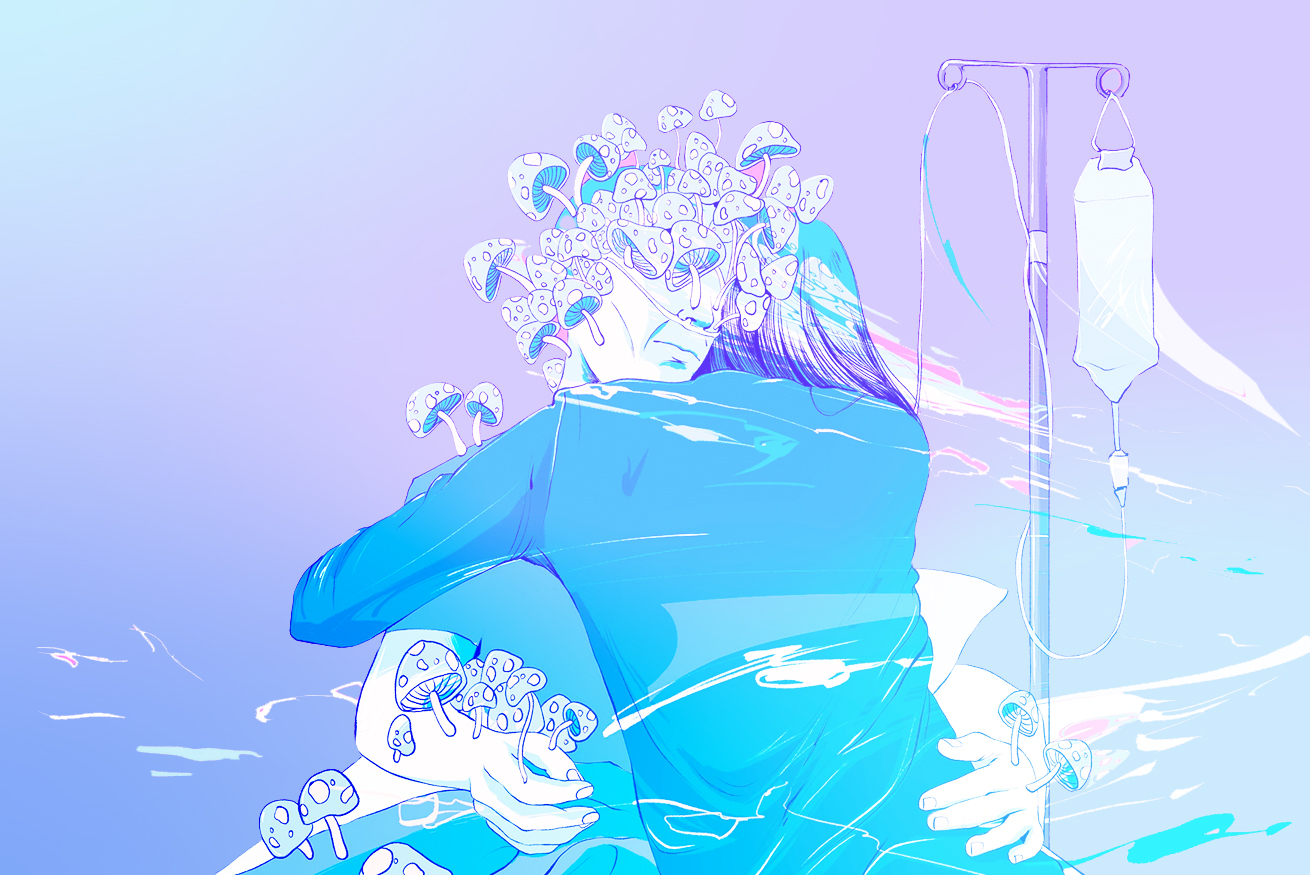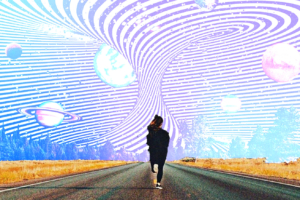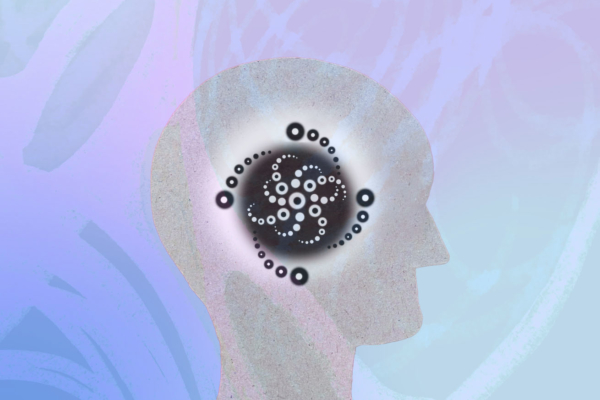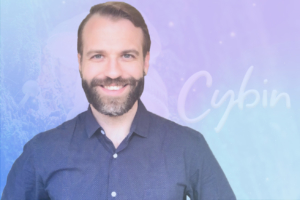
If you listen to psychedelic advocates there’s practically no mood disorder that psychedelics can’t cure. We’ve heard that psychedelics will “revolutionize mental health” and bring new treatments for anxiety, depression, OCD, PTSD, eating disorders, traumatic brain injury, prolonged grief, autism, ADHD, and more. We’re told that psilocybin mushrooms will be a “magic bullet” for depression, and yet the largest psilocybin for depression study to date did not show a significant difference in efficacy between psilocybin and escitalopram (a leading antidepressant). We’re told that microdosing mushrooms will improve our mood and productivity, yet multiple studies to date indicate that perceived benefits from sub-threshold doses of psychedelics are indistinguishable from a placebo.
So far there have been no magic bullets and no mental health revolutions, just endless amounts of media hype. But is the psychedelic hype train coming to an end?
The Shroom Boom and the Hype Bubble
In July of this year, Bloomberg published an article stating that the market value for psychedelic drugs is set to more than double by 2028. Harking back fifteen years ago, it seemed unthinkable that an esteemed financial media company would be singing the praises of psychedelics, and touting them as a profitable investment opportunity.
However, the past decade has seen unprecedented attention, both from the public and from the private sector, regarding the potential of psychedelics. According to David Yaden and his colleagues from Johns Hopkins University, we are finding ourselves in a psychedelic hype bubble, and the bubble may be about to burst.
In a recent paper published in JAMA psychiatry, Yaden and his colleagues liken the psychedelic field to a hype cycle. Since the 1960s, attitudes towards psychedelics have been shaped by the war on drugs and international drug policy. A blanket ban on psychoactive drugs in 1971 led to decades of deeply rooted skepticism and fear-mongering of psychedelic substances.
However, since the late 90’s, there has been a flurry of scientific interest in these compounds. Research has exploded in the last five years, with some impressive results to date; psilocybin-assisted psychotherapy has been effective in treating serious major depression, and MDMA-assisted therapy is particularly effective in treating PTSD. With these promising results, financial investors have started piling on to the psychedelic bandwagon —as Bloomberg testifies, the psychedelic drug market is currently worth $3.81bn.
This promise of large financial gains —some investors are calling this phase the ‘shroom boom’— has worryingly led to an epidemic of hype in the field. Articles in popular media have been hastily testifying to the “groundbreaking” potential of psychedelics to treat mental health conditions. (This Rolling Stone article highlights it nicely: “The Psychedelic Miracle: How some doctors are risking everything to unleash the healing power of MDMA, ayahuasca and other hallucinogens”).
Framing psychedelics as a panacea has led to extreme and overzealous positivity, which leaves no room for nuance and skepticism, two qualities that are paramount to the scientific method.
Is the Hype Bubble About to Burst?
The authors of the paper warn that we are currently “cresting the peak” of psychedelic hype, and may soon find that the bubble will burst. Following the inflated expectations that we’ve been subjected to, there’s an equally steep decline into the “trough of disillusionment.” In this, the public realizes that psychedelics may not be the miracle cure that they were promised, which leads to a backlash of overly negative perspectives.
To combat this, the public needs to adopt a more nuanced perspective. However, this is hard to do in the battlegrounds of social media like Twitter, where opinions are compressed into 280 characters. According to the authors, “In our social media-influenced culture, it seems easy to fall into extreme views.” This inevitable polarization has bred two types of people in the field of psychedelics; super-enthusiasts and super-skeptics. Yaden and his colleagues argue that both opinions aren’t valid, and should be met with nuance in the middle.
The super-skeptics are still subject to the cultural hangover of the 1960’s and 1970’s, and see the effects of psychedelics as either wildly dangerous, or completely nonsensical. Recent scientific research has debunked these claims; within a safe clinical trial with proper screening and care, the effects of psychedelics are generally safe. Also, within these trials, many participants have stated that the psychedelic experience is one of the most spiritually significant experiences of their life.
Conversely, many super-enthusiasts —often those with financial gain at stake— are wrong to over hype the potential of psychedelics. There was a huge amount of alarm last December, where Compass Pathways announced some topline results for the largest study of psilocybin for depression. Within this study, 12 patients out of 209 reported serious treatment-related adverse events, including suicidal behavior, intentional self-injury, and suicidal ideation. That’s nearly 5% of the sample, so if we see psychedelic therapy scaled up in the wider population, we may also see the harmful effects if the therapy is not conducted consciously and carefully.
In addition to this, super-enthusiasts are keen to sweep cases of sexual abuse within psychedelic therapy under the rug. A recent exposé in the form of a podcast, led by New York Magazine and Psymposia, a non-profit dedicated to leftist takes on psychedelic issues, followed several participants from a phase III MDMA for PTSD trial. While the trial was dubbed a huge success in the public media, the podcast included one notable example of a trial participant that was groomed and subsequently sexually assaulted within the study. We need to accept the fact that there is huge room for abuse within the field, and take the necessary cautious steps to prevent this from happening in the future.
Moving Forward: Nuance is Key
Because of the nature of psychedelic therapy, there is a huge amount of complexity to consider. The totality of this therapeutic modality is not limited to the drug itself —there is a huge amount of preparation required to undergo a high dose of psilocybin, and any insights from the experience need to be carefully integrated back into daily life. Neglecting one or more of these, or being facilitated by therapists with harmful intentions, will undoubtedly lead to harmful outcomes.
The authors finish the paper by erring on the side of caution, and calling other scientists to meet the ethical obligation of deflating the hype bubble. “As scientists and clinicians, we have an ethical mandate to dispute claims not supported by available evidence. We encourage our colleagues to help deflate the psychedelic hype bubble in a measured way so that we can get on with the hard work of more precisely determining the risks and benefits of psychedelics.”





